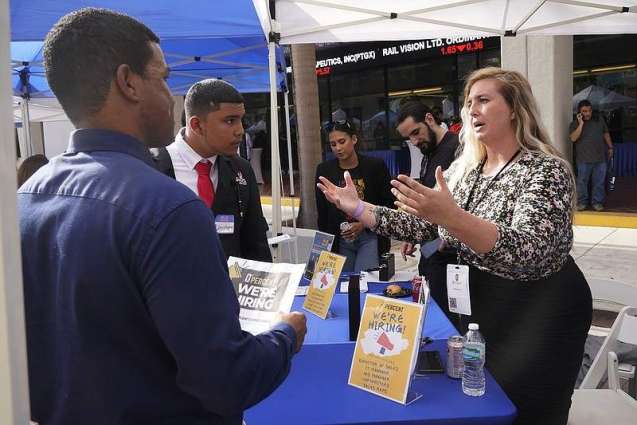US companies executed their largest layoffs in 14 years between January and February, with the technology sector making up for the bulk of the job cuts, employment trends tracker Challenger, Gray & Christmas said Thursday
WASHINGTON (Pakistan Point News / Sputnik - 09th March, 2023) US companies executed their largest layoffs in 14 years between January and February, with the technology sector making up for the bulk of the job cuts, employment trends tracker Challenger, Gray & Christmas said Thursday.
There were 102,943 layoffs in January and 77,770 in February, making up a total of 180,713 cuts, the most since 2009 for the two months, the Challenger report showed. February's cuts alone were more than five times higher than the 15,245 layoffs seen during the same month a year ago.
Tech giants from Microsoft to Google's Alphabet Inc, as well as PayPal, have slashed tens of thousands of jobs since the start of the year to curb spending and protect profit margins amid an uncertain economic outlook.
"Right now, the overwhelming bulk of cuts are occurring in Technology. Retail and Financial are also cutting right now, as consumer spending matches economic conditions," said Andrew Challenger, senior vice president at Challenger.
The reading on layoffs came ahead of Friday's non-farm payrolls report for February, where some 205,000 positions were expected to have been added to payrolls versus January's outsized growth of 517,000 jobs.
The Federal Reserve has said that a labor market slowdown will be necessary to cool inflation that proved more stubborn than thought.
One of the Fed's biggest challenges has been stellar jobs data as the nation's labor market continues to stun economists with stupendous month after month.
While policymakers the world over typically celebrate on seeing good jobs numbers, the Fed is in a different predicament. The central bank wishes to see an easing of conditions that are a little "too good" now for the economy's own good - in this case, unemployment at more than 50-year lows and average monthly wages that have grown without stop since March 2021.
Such job security and earnings have cushioned many Americans from the worst price pressures since the 1980s and encouraged them to continue spending, further feeding inflation.
Economists say monthly jobs numbers need to grow meaningfully below expectations to create some ding at least in employment and wage security which the Fed suggests are its biggest two headaches now in fighting inflation.
Inflation, as measured by the Consumer Price Index, hit a 40-year high of 9.1% in the United States during the year to June. It has moderated since, to an annualized growth of 6.4% in January, but remains well above the Fed's target of just 2% per year.
"Although inflation has been moderating in recent months, the process of getting inflation back down to 2 percent has a long way to go and is likely to be bumpy," Fed Chair Jerome Powell said in testimony before the US Congress this week. "Recent economic data, particularly inflationary pressures, have been stronger than expected."
To clamp down on runaway price growth, the Fed added 450 basis points to interest rates since March last year via eight hikes. Prior to that, rates stood at nearly zero after the global outbreak of the coronavirus in 2020.
The Fed's first post-COVID hike was a 25-basis point increase in March last year. It then moved up with a 50-basis point increase in May. After that, it executed four back-to-back jumbo-sized hikes of 75 basis points from June through November. Since then, it has returned to a more modest 50-basis point increase in December and a 25-basis point hike in February.
The Fed-funds-futures - which serves as a barometer for upcoming rate decisions - HAS priced in a 50-basis point hike for March 22, when the central bank is to decide on rates again. Prior to that, the Fed had been expected to adopt a hike of just 25 basis points.




